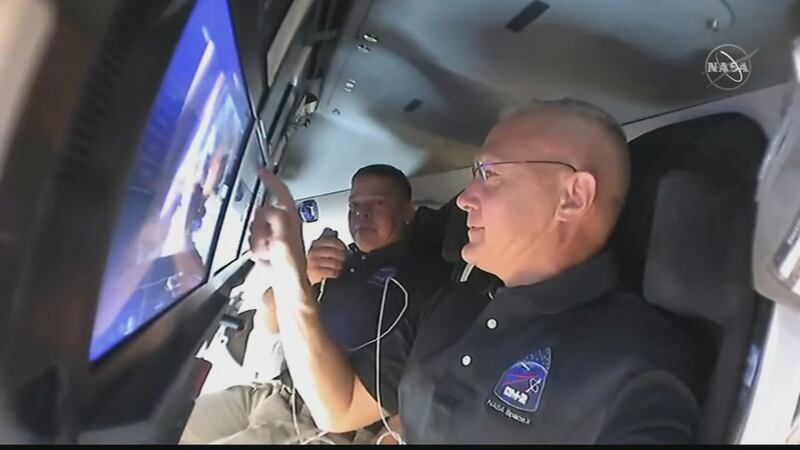CAPE CANAVERAL, Fla. — NASA astronauts Bob Behnken and Doug Hurley are aboard the International Space Station after a spectacular launch from the Kennedy Space Center on Saturday.
But as the excitement winds down, there are still more milestones ahead for the first crew to launch from U.S. soil in nearly a decade.
Watch: SpaceX, NASA make history with first crewed launch from U.S. soil in 9 years
Aboard the ISS on Monday, Behnken and Hurley spoke with reporters about what it was like to fly aboard the SpaceX Crew Dragon spacecraft, which they named “Endeavor,” on the first crewed commercial flight to the space station ever.
LIVE NOW: Now that @SpaceX’s Dragon Endeavour has successfully arrived to the @Space_Station, join a Q+A with astronaut Chris Cassidy and the newest additions to the crew: @AstroBehnken and @Astro_Doug: https://t.co/IcSOvK521G https://t.co/IcSOvK521G
— NASA (@NASA) June 1, 2020
They were joined by fellow NASA astronaut Chris Cassidy, who launched to the station aboard a Russian Soyuz back in April.
“Smoother first stage, little rougher second stage,” Behnken said, referring to the flight to orbit. “More than we saw on shuttle and I think than both of us were expecting.”
TIMELINE: Historic crewed launch successfully blasts off from Space Coast
Behnken and Hurley will continue to perform tests on the Crew Dragon in addition to conducting research and other tasks with the space station Expedition 63 crew.
“We just docked. We've still got to do our mission here with Chris and then undock, depart, do a reentry, landing and then a recovery,” Hurley said.
The demonstration mission will be the final major step before NASA’s Commercial Crew Program certifies the Crew Dragon for future launches to the space station.
The duration of the mission is still undetermined. But, when Behnken and Hurley do splashdown, they'll have the honor of bringing back an American flag left at the ISS by the last crew to launch from the Kennedy Space Center on the very last shuttle mission, STS-135. Hurley piloted that flight.
Huge thank you to @NASA, @SpaceX, and America for making this possible! pic.twitter.com/xp8XCpU2HD
— Bob Behnken (@AstroBehnken) June 1, 2020
“The important point is just returning launch capability to the United States,” Hurley said. “To and from the space station, that's what this flag really means.”
The Crew Dragon being used in this mission can stay in orbit for about 110 days. The timing will depend on the readiness of the next Commercial Crew launch.
© 2020 Cox Media Group








